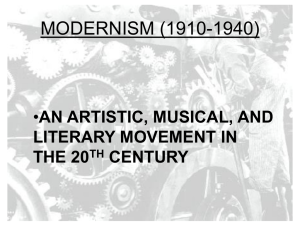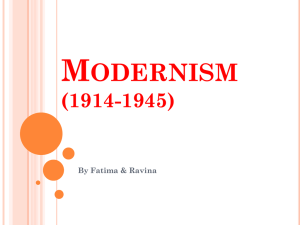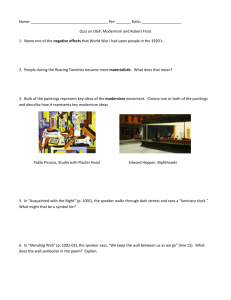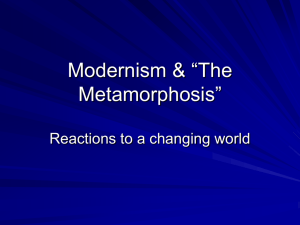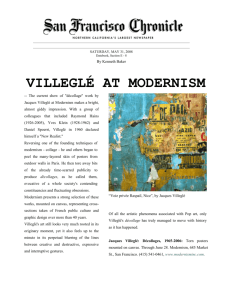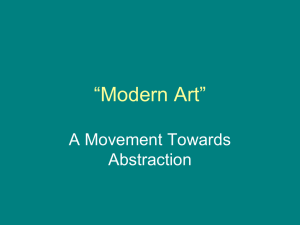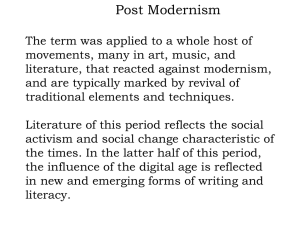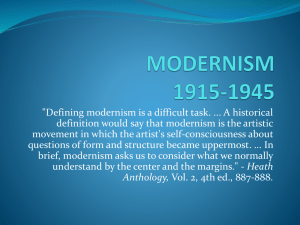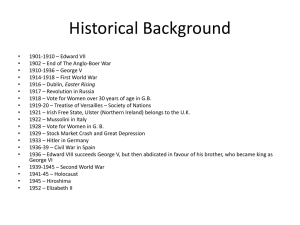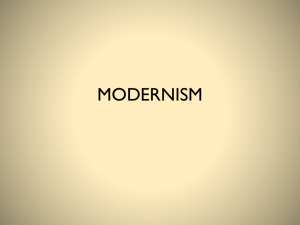American_Modernism
advertisement
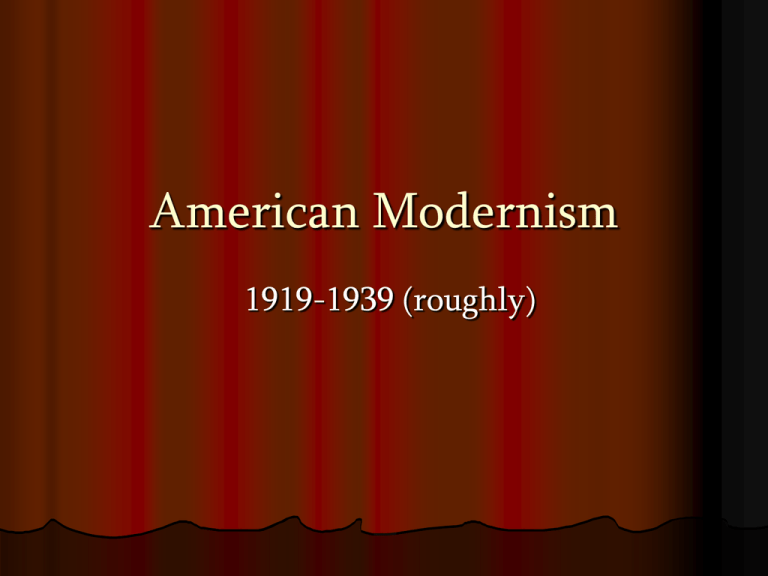
American Modernism 1919-1939 (roughly) New York Armory Show 1913 – The New York Armory Show introduces contemporary European art to America. Most controversial painting was Marcel Duchamps Nude Descending a Staircase. (pictured right) (image taken from: http://www.abcgallery.com/D/duchamp/duchamp2a.jpg) Fountain, Marcel Duchamp The Great War, 1914-1919 1914: Archduke Francis Ferdinand is assassinated in Sarajevo, after which the Austro-Hungarian Government declares war on Serbia. August, 1914: Germany declares war on Russia and France; Great Britain declares war on Germany as German troops invade Belgium. Japan also declares war on Germany. The Great War, 1914-1919 April 2, 1917: Saying that "the world must be made safe for democracy," Wilson asks Congress to declare war on Germany. June 26, 1917: The Versailles Treaty was signed, ending WWI Hemingway: drove ambulance in Italy during WWI EE Cummings: volunteer ambulance driver Important works of 1915 T.S. Eliot, “The Love Song of J. Alfred Prufrock” Robert Frost, North of Boston 1922: Modernism’s Golden Year Important works published in 1922: – James Joyce, Ulysses (the copies sent to the US were burned because they were considered “obscene”) – T.S. Eliot, The Waste Land Elements of Modernism Emphasis on bold experimentation in style & form, which reflects the fragmentation of society Rejection of traditional themes, subjects, & forms Rejection of sentimentality & artificiality Sense of disillusionment & loss of faith in American dream Elements of Modernism Rejection of the ideal of the hero as infallible () in favor of a hero who is flawed & disillusioned, but shows “grace under pressure” Interest in the inner workings of the mind (especially new techniques: stream of consciousness) Symbolism Definition: form of expression in which the world of appearances is violently rearranged by artists who seek a different and more truthful version of reality Everyday version: Symbolists believed that art should aim to capture more absolute truths which could only be accessed by indirect methods. Thus, they wrote in a highly metaphorical and suggestive manner, endowing particular images or objects with symbolic meaning Imagism Manifesto: “The image is the thing!” Images and Imagery alone can carry a poem’s emotion and message Imagist poets wanted to “rid poetry of its prettiness, sentimentality, and artificiality, concentrating instead on the raw power of the image to communicate feeling and thought” Imagism Ezra Pound: – – 2. Direct treatment of the “thing” 3. Use absolutely no word that does not contribute to meaning (From Pound, “A Retrospect”) An Image: “that which presents an intellectual and emotional complex in an instant of time” “In a Station of the Metro” The apparition of these faces in the crowd; Petals on a wet, black bough.
